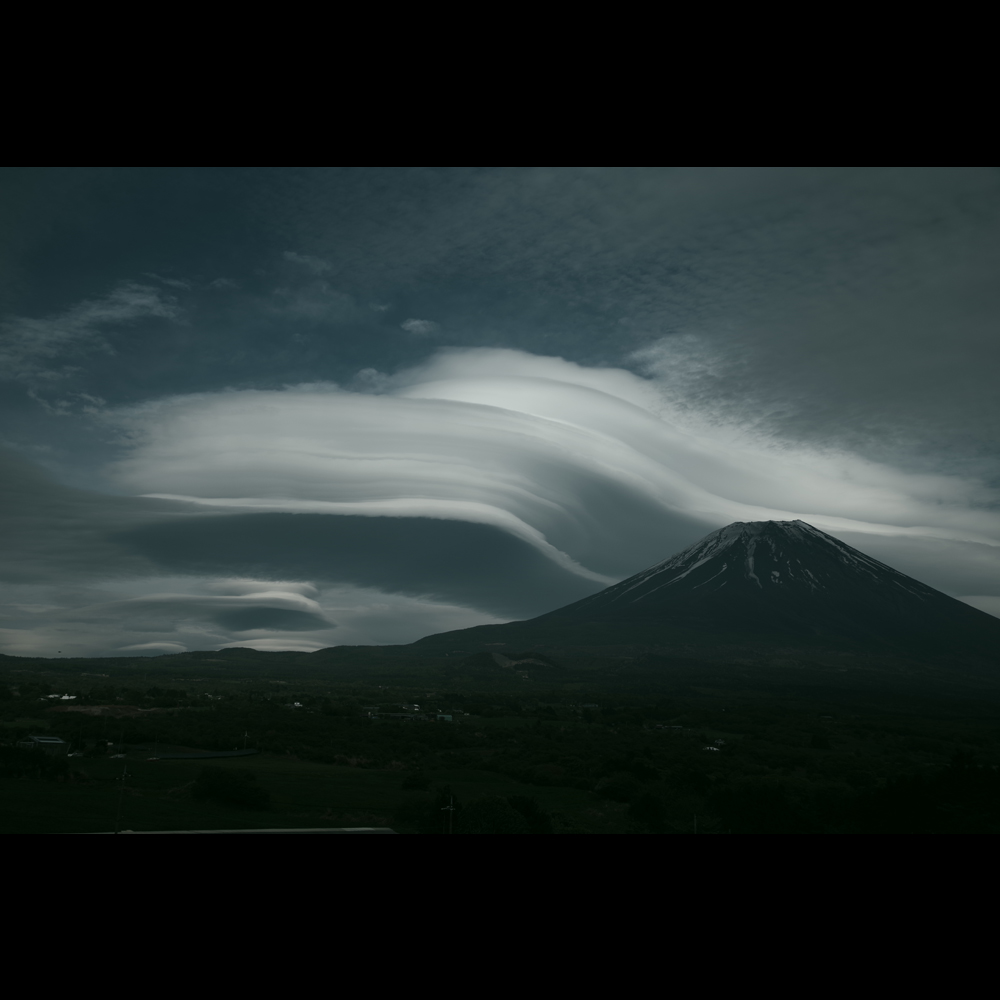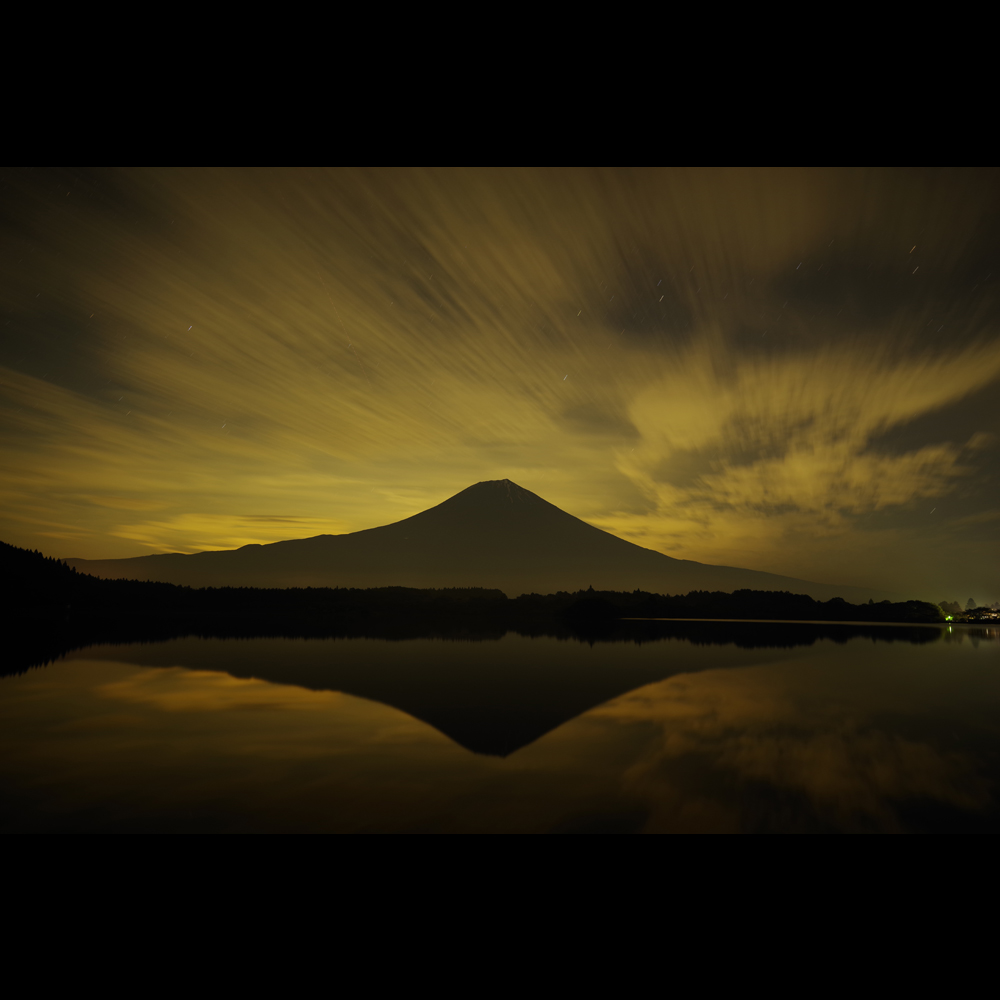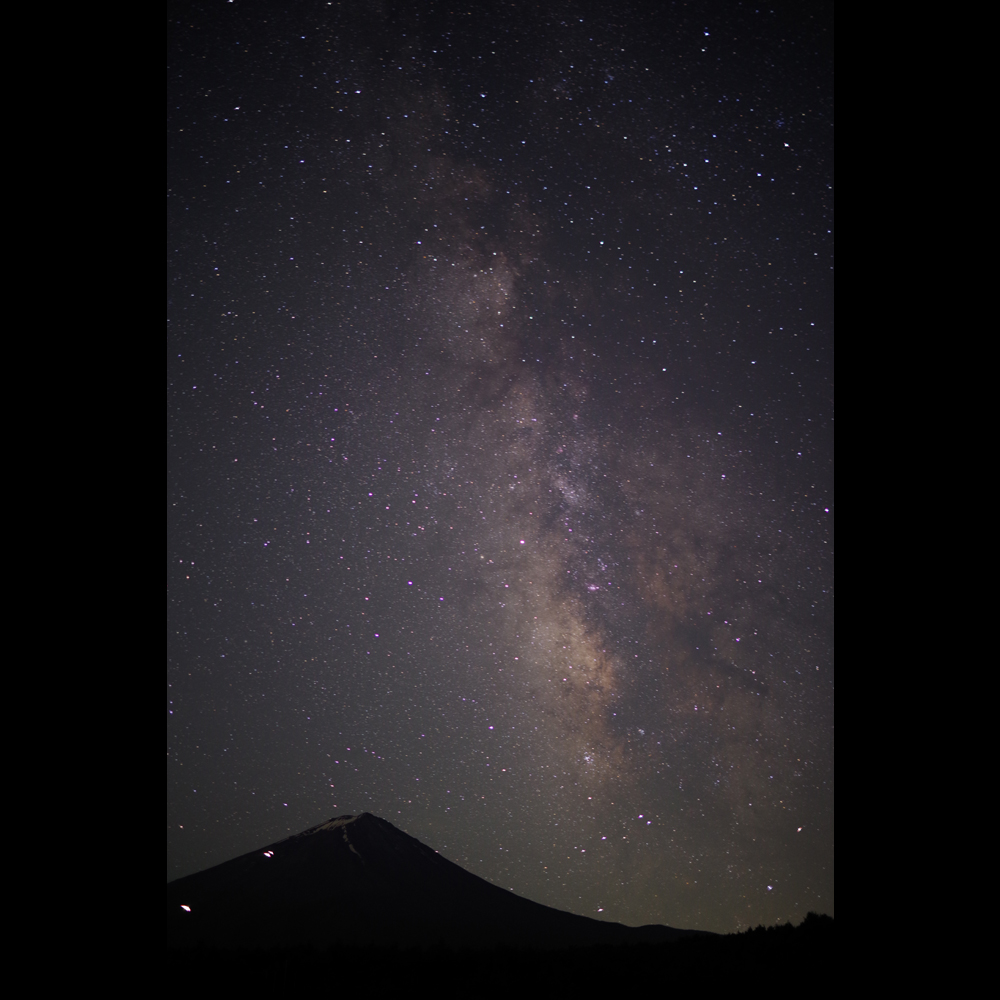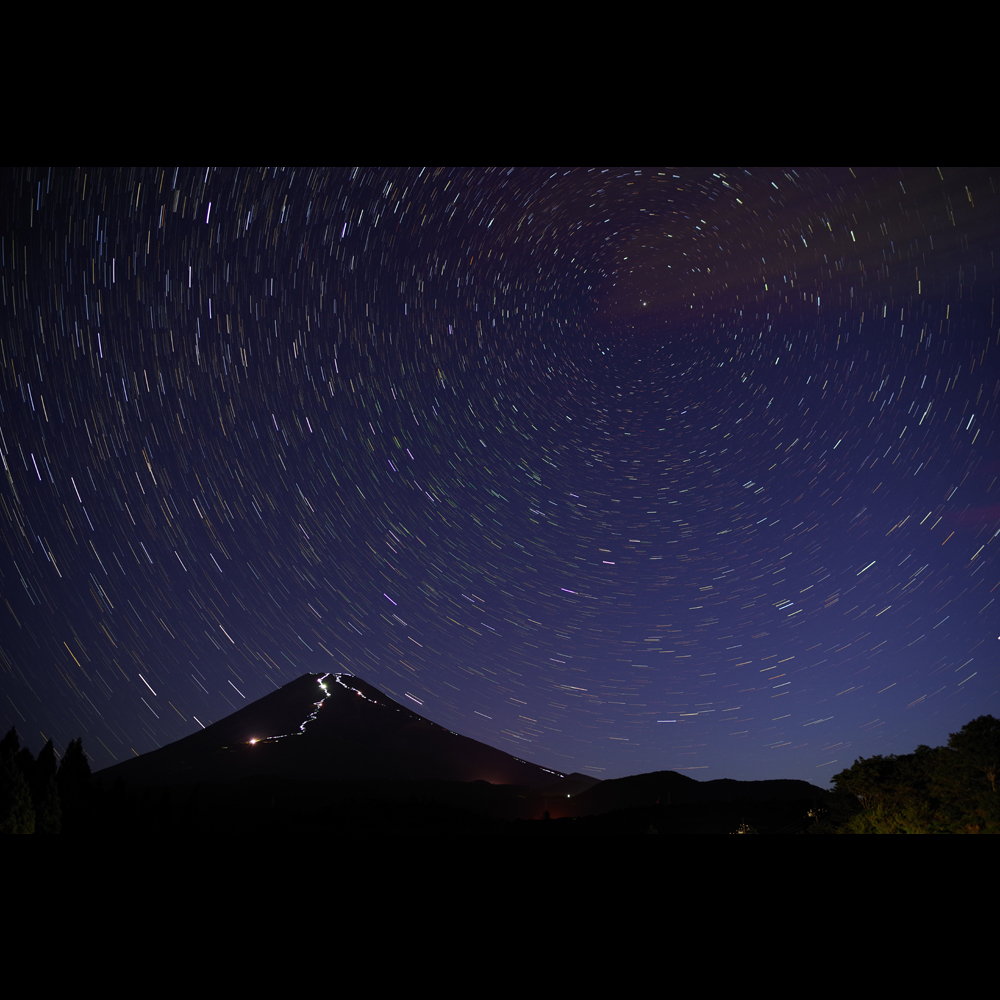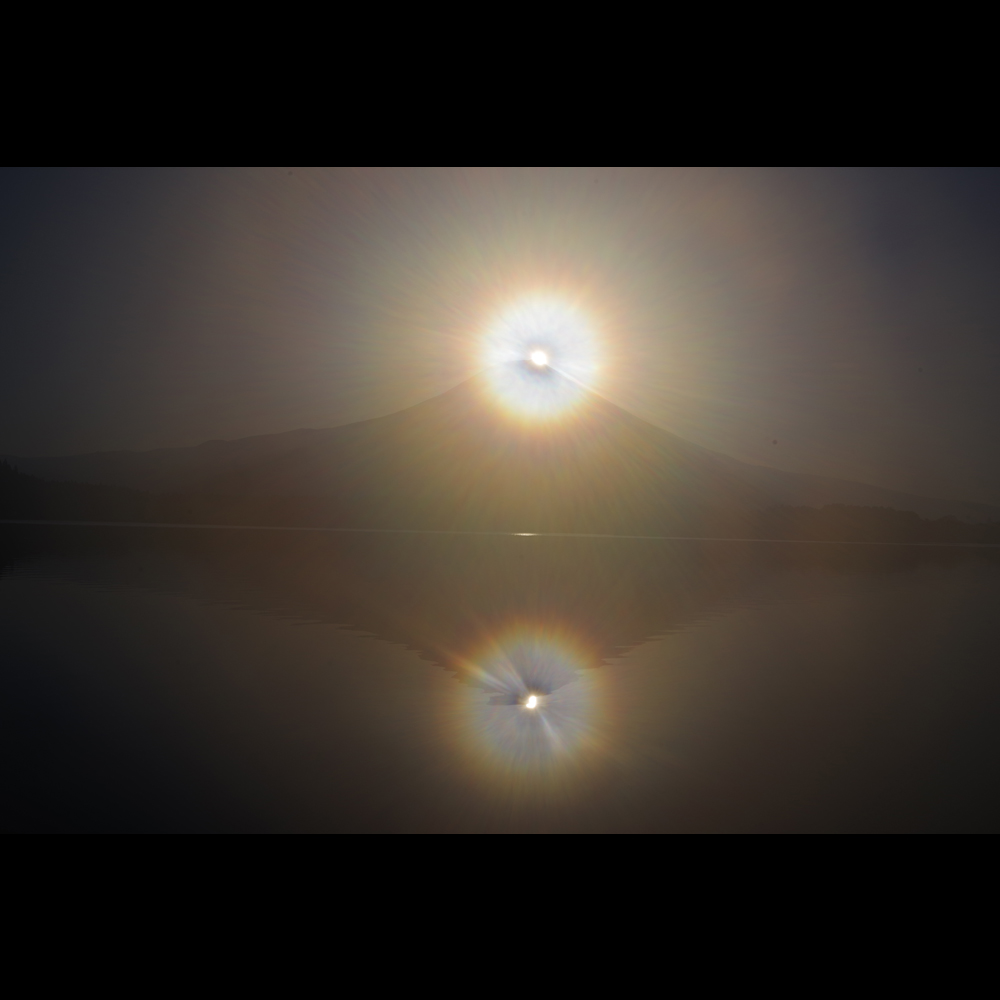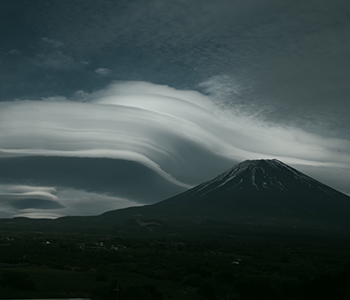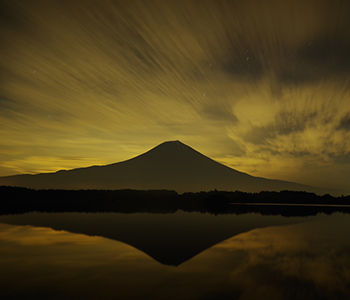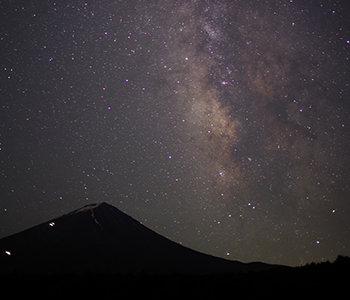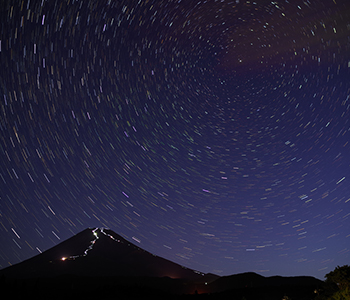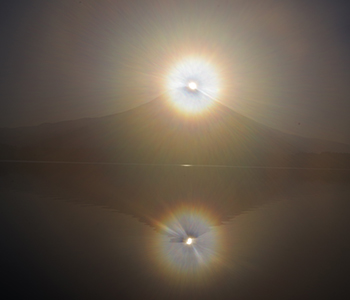

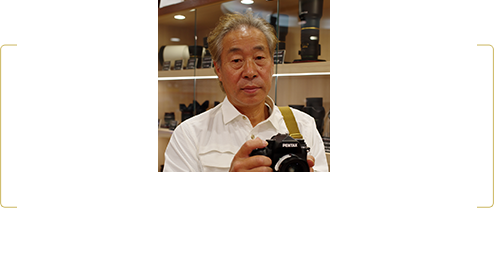
Many years ago, in the golden age of film, I loaded an ISO 400 film into the film magazine of a Hasselblad camera and used it at ISO 1600 by push-processing it by 2 stops in an attempt to get true blacks. Through countless attempts I kept my goal of capturing the North Star, Mount Fuji, and the Milky Way.
Summiting Mount Fuji in the hope of taking a picture of everything there was to see, I used a fisheye lens to take in the crown and crater of the mountain, pointing the camera towards the starry sky from the crater as I released the shutter. At ISO 1600, an aperture of F4, and a shutter speed of 2 minutes, the exposure was perfect.
At the time, ISO 1600 was the limit for film cameras, so it was a kind of special photography.
Thereafter the Hasselblad camera gave way to the PENTAX 645D and then PENTAX 645Z, medium format digital SLR cameras. Just like the world in general, equipment changes, and I also now use the PENTAX K-1 and PENTAX K-1 Mark II. Camera progress knows no limits.
Now we even have ISO 819000... What on earth can that mean?!
As always, I continue to take pictures of Mount Fuji and the starry sky.
I tried to capture Mount Fuji and the Milky Way in the inky night with the original K-1 and K-1 Mark II at the same time.
At the maximum aperture of F1.8, ISO 1600, and a shutter speed of 30 seconds, I released both shutters at the same time. The images were shown on both camera monitors at the same time, and the differences were obvious.
When I returned to my studio and looked at the sky on the PC, the image quality was so good and I couldn’t believe it was shot at ISO 1600. The smooth picture was free from pixelation no matter how much I zoomed in.
If you asked me about how they were to use, I’d be stuck for an answer because I’m unfamiliar with digital things and worldly matters. I just took pictures without worrying about anything.
1952: Born in Kanagawa.
1972: Wandered throughout Japan, beginning his work as a photographer focusing primarily on steam locomotives.
1976: Pulled by the lure of Mount Fuji, began his love affair with photographing the mountain.
1984: Held his first solo exhibition, “A Thousand Years of Mount Fuji.”
1985: Moved to Oshino in Yamanashi.
1990: Built a house with his own hands in Fujigane, Kamikuishiki (now, Fujikawaguchiko) at the foot of Mount Fuji, using it as a base for his photography efforts.
1991: Moved away from Mount Fuji to travel the United States. After returning to Japan, began to relook at Mount Fuji.
1993: Spurred on by new insights, began to photograph dense forests.
1995: Began using a large-format 8×10 camera.
2008: Began photography trips to India.
2010: Received the Lifetime Achievement Award at the Photographic Society of Japan Awards.
2014: Began time-lapse 8K photography.

